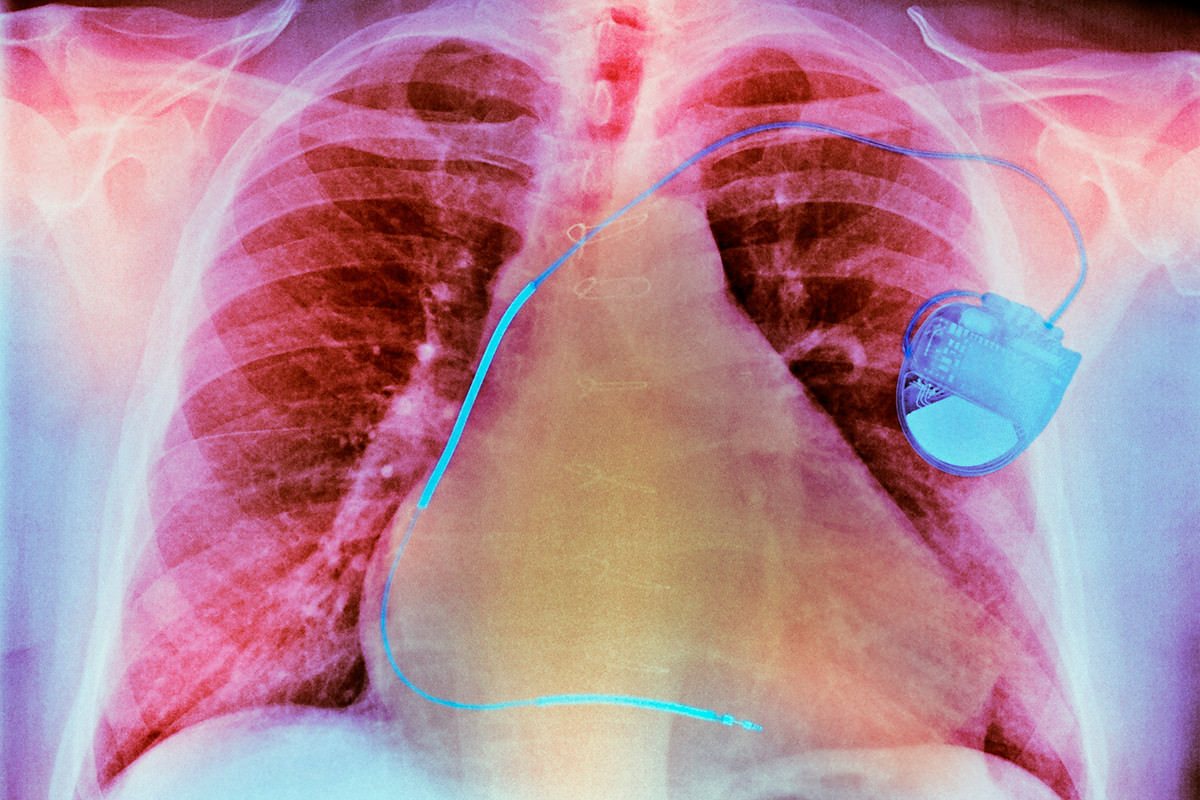Wireless signal sent through meat fast enough to watch Netflix
Source: Aviva Rutkin
 Your pacemaker could soon be streaming video
Your pacemaker could soon be streaming video
DR P. MARAZZI/SCIENCE PHOTO LIBRARY
Your data rate is about to be beefed up. Researchers have fired a wireless signal through slabs of pork and beef at speeds fast enough to transmit high-definition video. The technique, which the team has nicknamed “meat-comms”, could help doctors interact better with medical devices implanted in our bodies.
Existing implants use radio to communicate with the outside world. But radio waves do not travel well through the soft tissue in our bodies. Ramping up the power to improve the signal can be dangerous, as it heats up the tissue it passes through.
These limitations have stopped us developing medical implants that can send and receive useful amounts of wireless data, says Andrew Singer, at the University of Illinois at Urbana Champaign. So his team turned to ultrasound instead.
Singer has spent years building ultrasonic systems for the navy and suspected that a similar approach would work well in the body. “You’re a big bag of salt water, with some bones and some other tissues,” he says. “Communicating in the ocean and communicating in your body are very similar.”
Ultrasound is sometimes used to perform surgery without having to cut open the body. High-intensity sound waves focused on a tiny area can burn away unwanted tissue without harming the surrounding area. But Singer was interested in using it to send data.
To test the idea, Singer and his colleagues first submerged their transmitter and receiver in a tank of water. The system transmitted at 120 megabits a second – far faster than most home internet connections – over a distance of two centimetres.
They then tried sending data through meat. The team tested two different types of tissue: a pork loin and beef liver. They suspended the pieces of meat in the water tank and found that the ultrasonic signal passed through both types of meat at speeds of up to 30 megabits a second. That is 1000 times faster than existing implants, which send radio signals through tissue at a maximum of 50 kilobits a second. “You could stream Netflix through the pork loin,” says Singer.

The ultrasound system transmitted data far faster than most home internet connections
Andrew C. Singer
“For high-definition video, this is more than sufficient,” says Akram Alomainy, at Queen Mary University of London in the UK, who was not involved in the research. Alomainy thinks the technology could be particularly useful for wireless endoscopy, in which a person swallows a pill that broadcasts a video feed from inside their digestive tract. At the moment, wireless endoscopy requires a laptop-sized device placed on the outside of your body to pick up the feed. A system that transmitted using ultrasonic waves would be far less cumbersome.
But Alomainy would first like to see the team send a signal through multiple layers of organs. “We don’t just have one organ in our body,” he says. “A liver has different properties from the kidney or the stomach.” He thinks the data might not move as quickly when it has to travel through different types of tissue.
The meat-comms team is planning to test the approach with real medical implants or living tissue, but the initial results already suggest some exciting future possibilities, says Singer. Software updates could potentially be beamed directly to medical implants without the need to remove them surgically.
He also thinks we could have wireless networks inside us, with an implant in our gut sharing information with one in our liver, for example. For now, that’s science fiction, says Singer. “But at the root of science fiction are questions about what is possible. We wanted to show that it was possible.”
| }
|